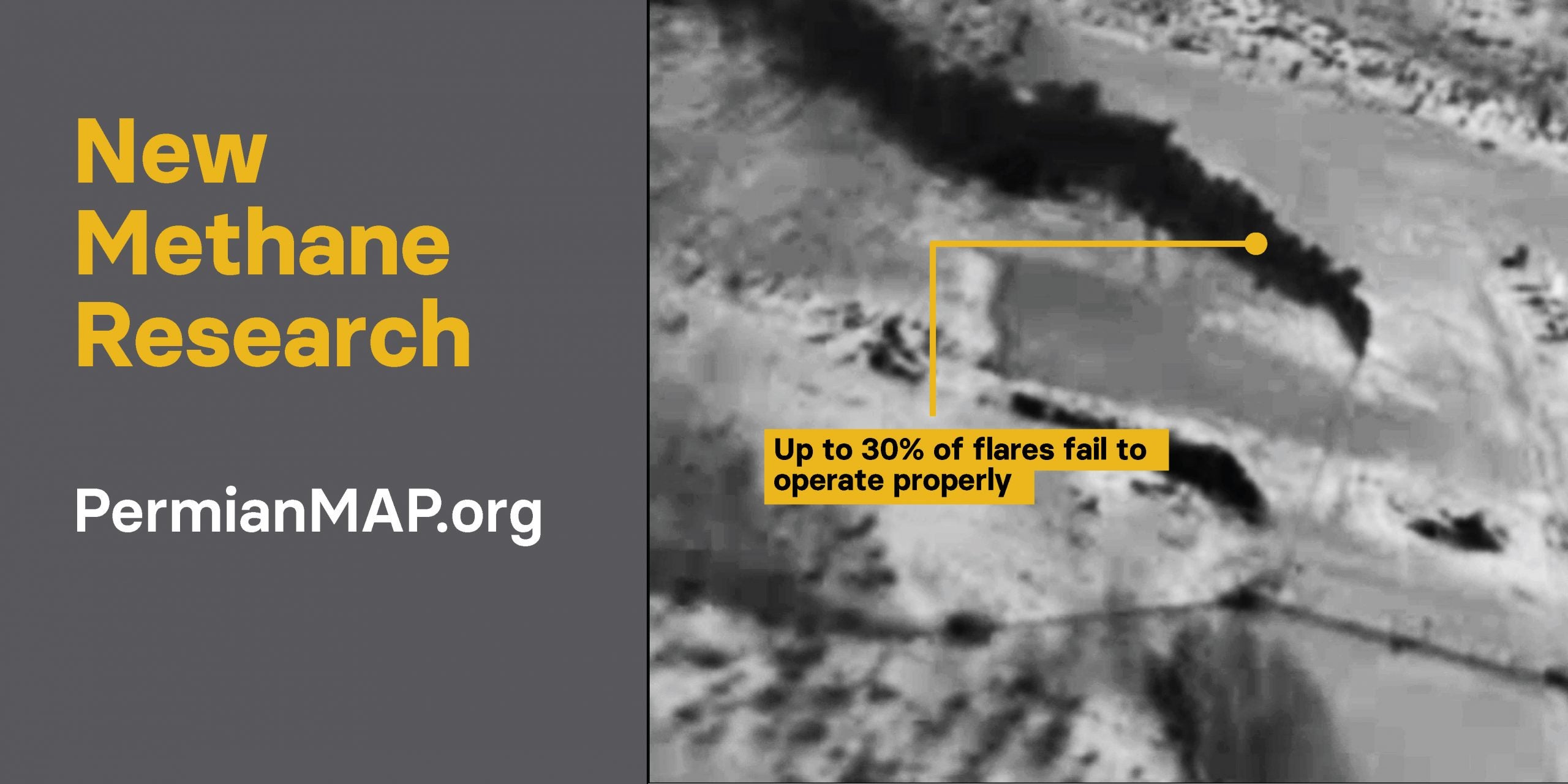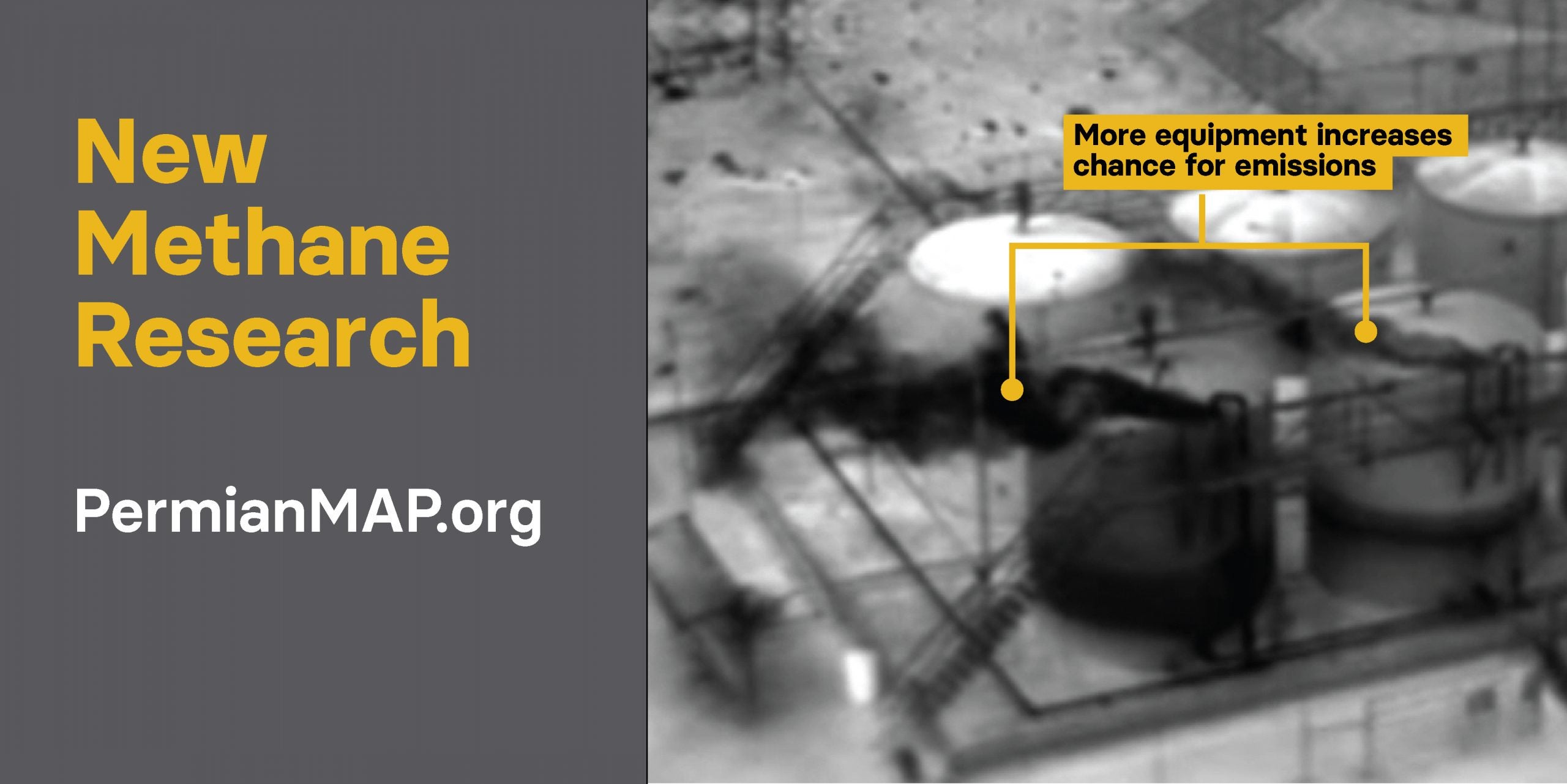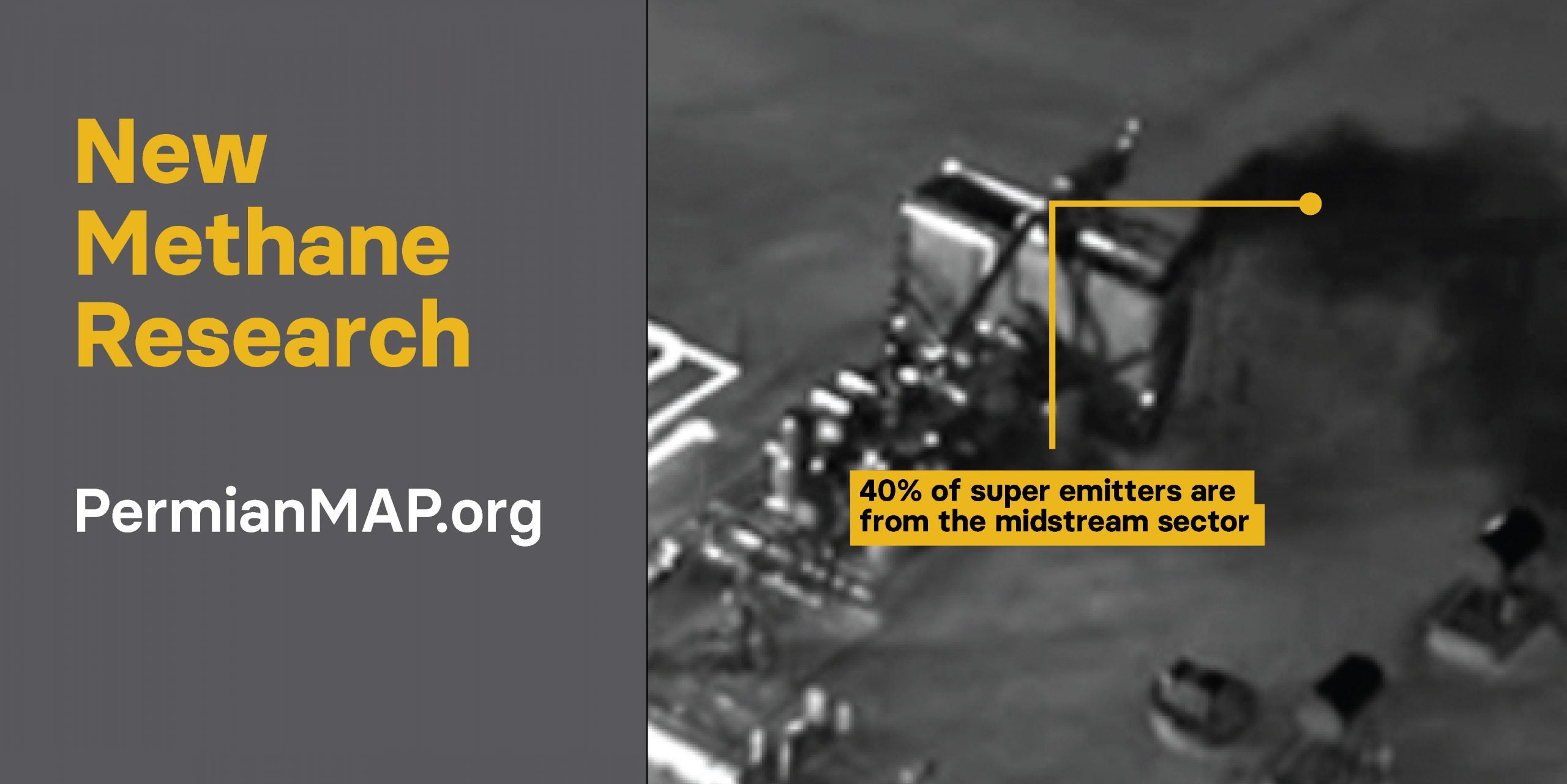By Dan Grossman and Ben Hmiel
Newly released research is shedding more light on the largest sources of methane emissions in the nation’s largest oilfield.
Methane is an extremely potent greenhouse gas and has a huge impact on the current rate of global warming. The oil and gas industry is one of the biggest emitters.
Using a helicopter equipped with an infrared camera, we surveyed over a thousand sites across the Permian Basin to get specific information about the types of facilities, equipment and events that make the Permian Basin the highest-polluting oilfield in the country. Three things immediately stood out.
More equipment equals more emissions
We wanted to learn more about emissions from “marginal wells” — those that typically produce less than 15 barrels of oil or 60,000 cubic feet of gas a day. Despite the fact that marginal wells make up the vast majority of wells across the country, operators often seek to have them exempted from emissions standards. The argument is based on an assumption that because they produce less, they pollute less. But that is not the case. Our research indicates it is the volume of equipment — not the volume of production — that is likely to impact emissions levels.
What new Permian research means for U.S. methane policy Share on XWe looked at two types of marginal well sites:
- Simple sites — those with just a pumpjack or well head and no other equipment.
- Complex sites — those with tanks, flares, compressors and other machinery.
The simple sites with fewer pieces of equipment had virtually no large emissions. Comparatively, we measured emissions at about 16% of more complex sites, and about 80% of the emissions were coming from tanks. Cumulatively, these emissions add up. About half of emissions from the Permian Basin well sites come from these smaller, lower producing wells.
Flares malfunction at a much higher rate than previously thought
We also examined emissions from flares. Our previous surveys of Permian flares indicated that about 10% are malfunctioning — leading to large emissions of methane. However, those surveys mostly looked at high-production sites that rely upon routine flaring. When we expanded our survey to include marginal wells with more intermittent flares, we found that number tripled. Approximately 30% of flares were pumping methane emissions into the air rather than burning the methane as they are designed to do. Regularly checking these marginal facilities for equipment failures could help substantially reduce the rate of flare malfunctions.
Oil and gas production is not the only problem
The other significant finding from this research confirms that the midstream sector — sites that process and move oil and gas through the system — is just as much of an emitter as the production sites. We detected large emissions at nearly 40% of midstream sites surveyed. Data released last week from researchers at the University of Arizona and NASA’s Jet Propulsion Laboratory similarly confirmed that about half of all Permian emissions are from the midstream sector.
Explore all the new data and findings.
Click here for mobile friendly version.
Policy implications
Congress is currently debating whether it should use the Congressional Review Act to reinstate sensible methane standards that would limit this pollution from newer well sites and lay the groundwork for next-generation standards for new and existing facilities. Doing so would be an important step to help address this pollution.
Meanwhile, the Environmental Protection Agency is expected to propose new rules this fall that could and should go even further to reduce emissions. Applying these rules to older facilities, complex marginal well sites and midstream operations will be necessary for the U.S. to meet its climate goals.
A sensible path forward
Reducing emissions from oil and gas facilities is one of the fastest, cheapest and most effective ways to slow the rate of climate change. Many reduction measures pay for themselves, since they result in more gas being captured and delivered to customers.
Methane mitigation is also a huge job creator. Research shows that policies requiring companies to reduce emissions produce a net increase in jobs. In fact, the methane mitigation industry already employs thousands of high-paying individuals across the country and is projected to grow as companies and regulators increase their focus on methane reductions.
The good news is we know that programs designed to reduce emissions are incredibly effective. In 2014, Colorado started regulating methane from its oil and gas industry, and in the year after regulations were implemented, operators reported a 75% drop in the number of methane leaks detected during routine field surveys.
Strong, national standards to reduce methane emissions from the oil and gas industry is achievable and is supported by some of the world’s largest oil and gas companies. Ensuring that methane standards are as effective and encompassing as possible is critical to avoiding the worst impacts of climate change.












